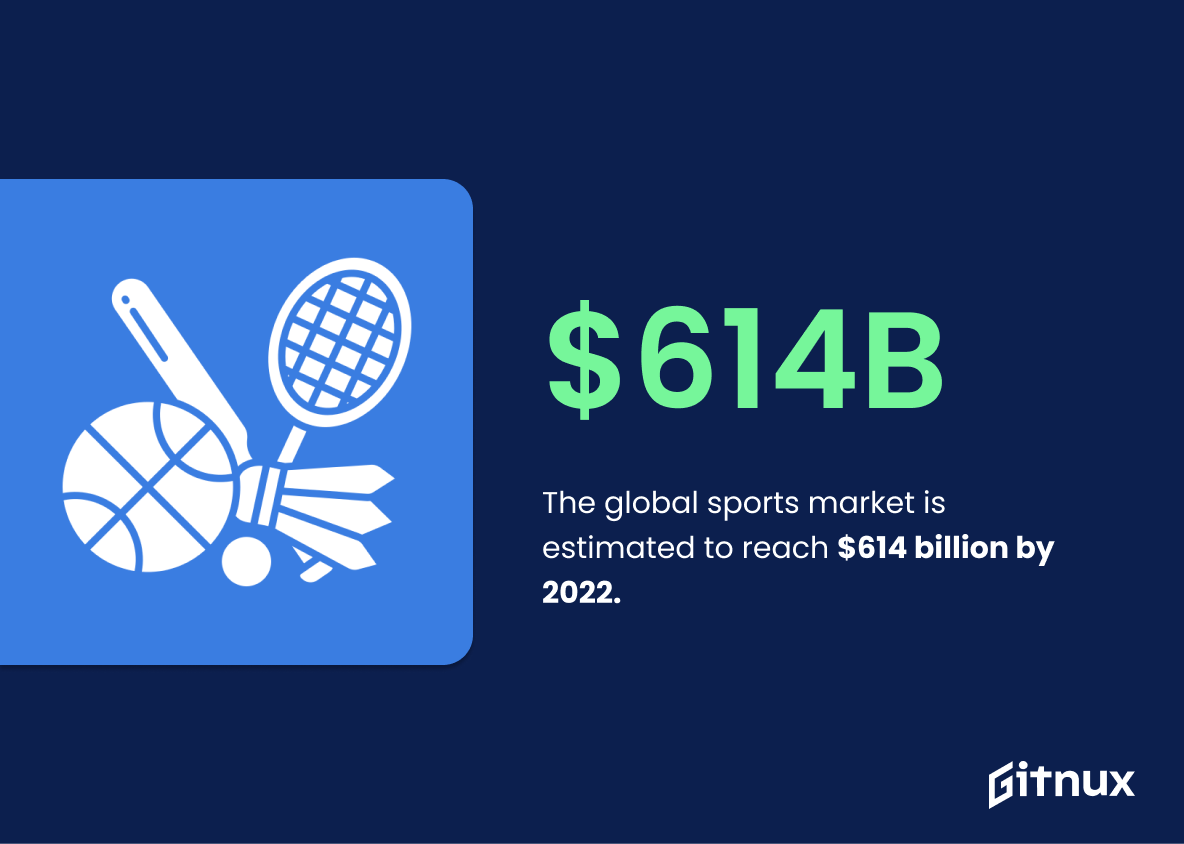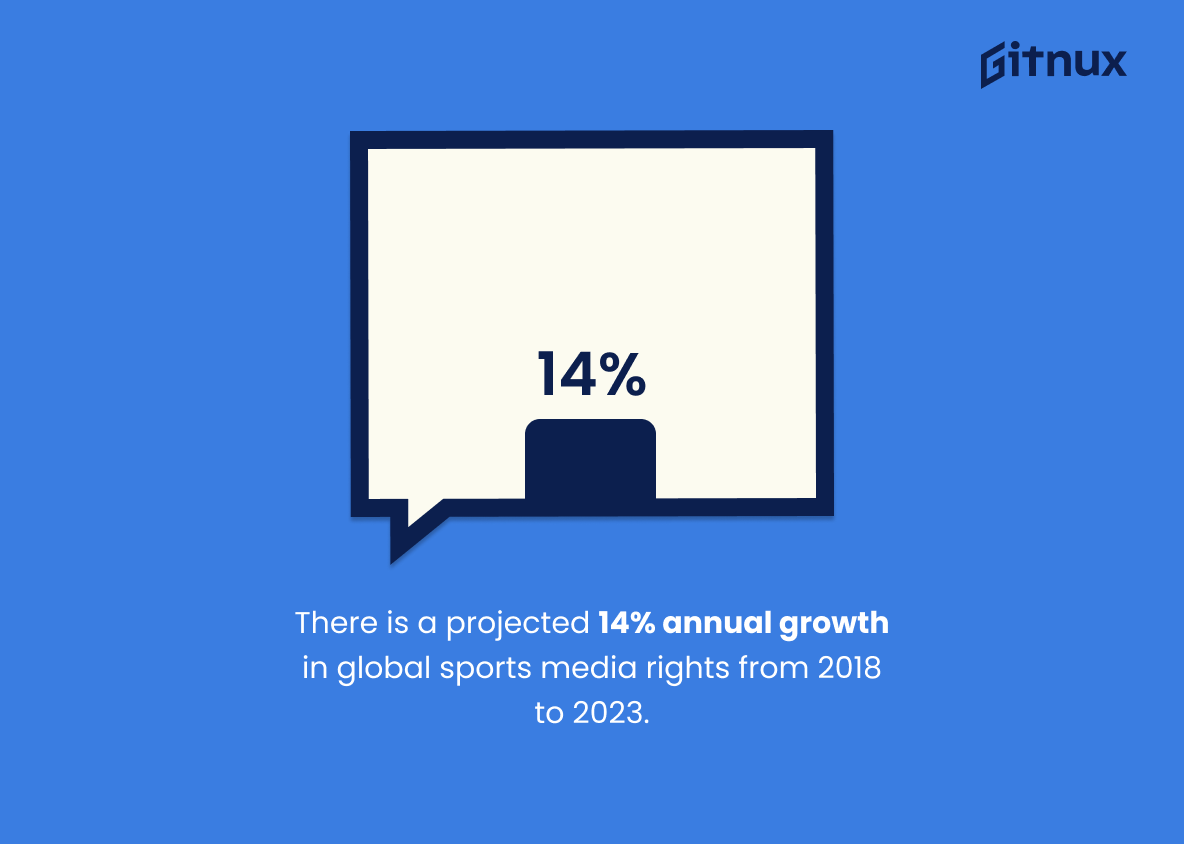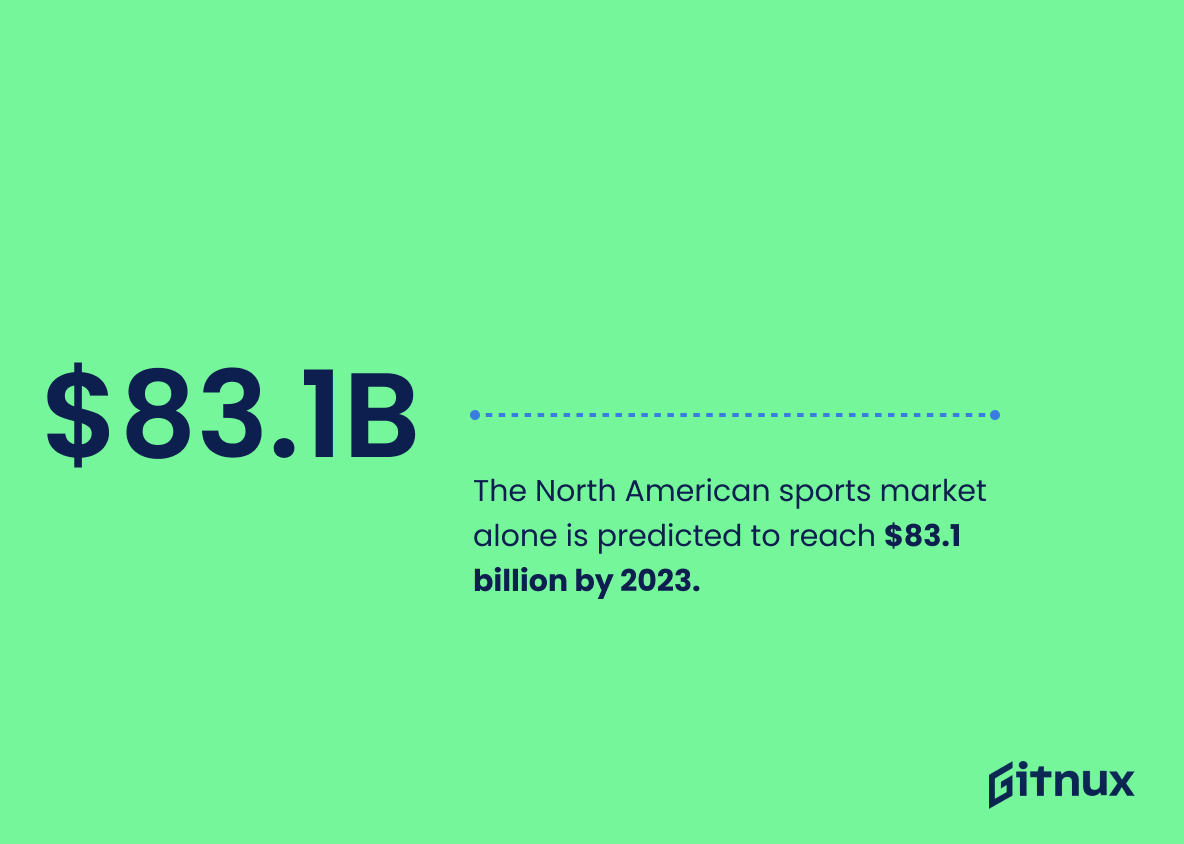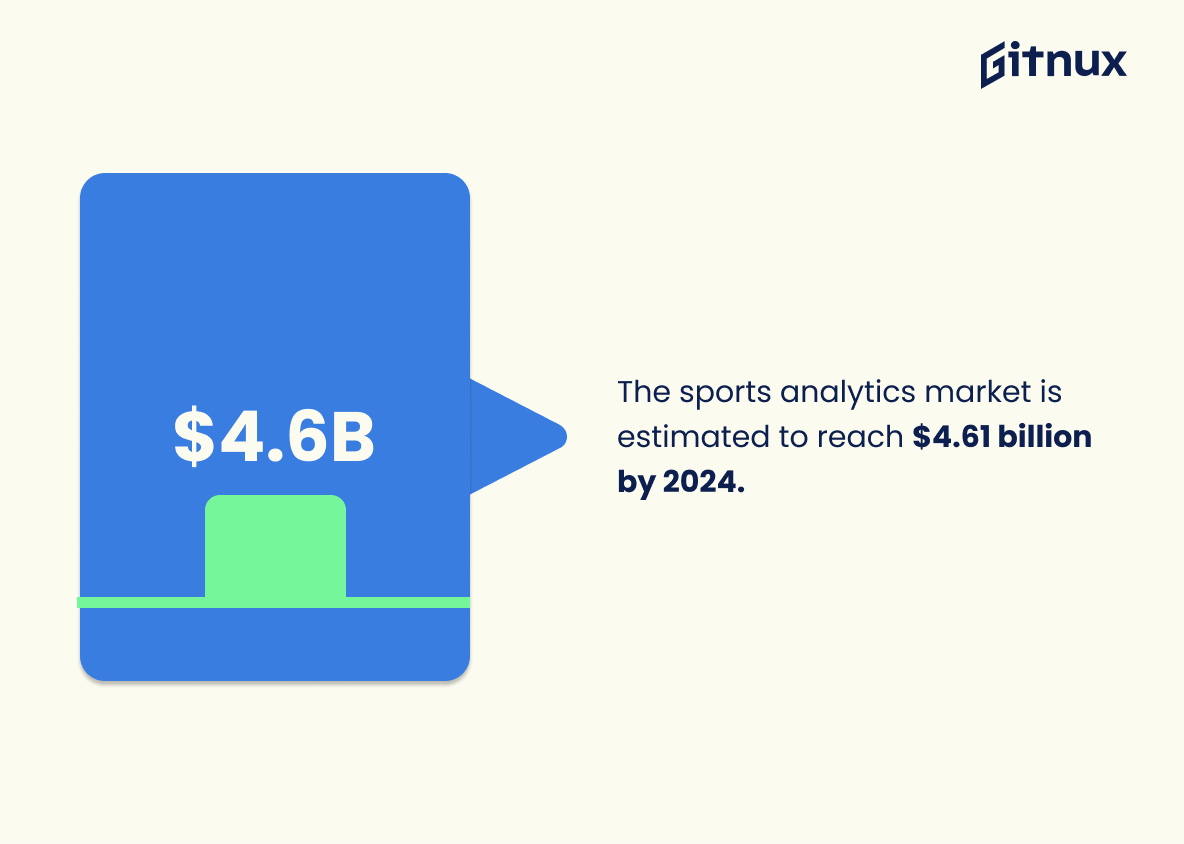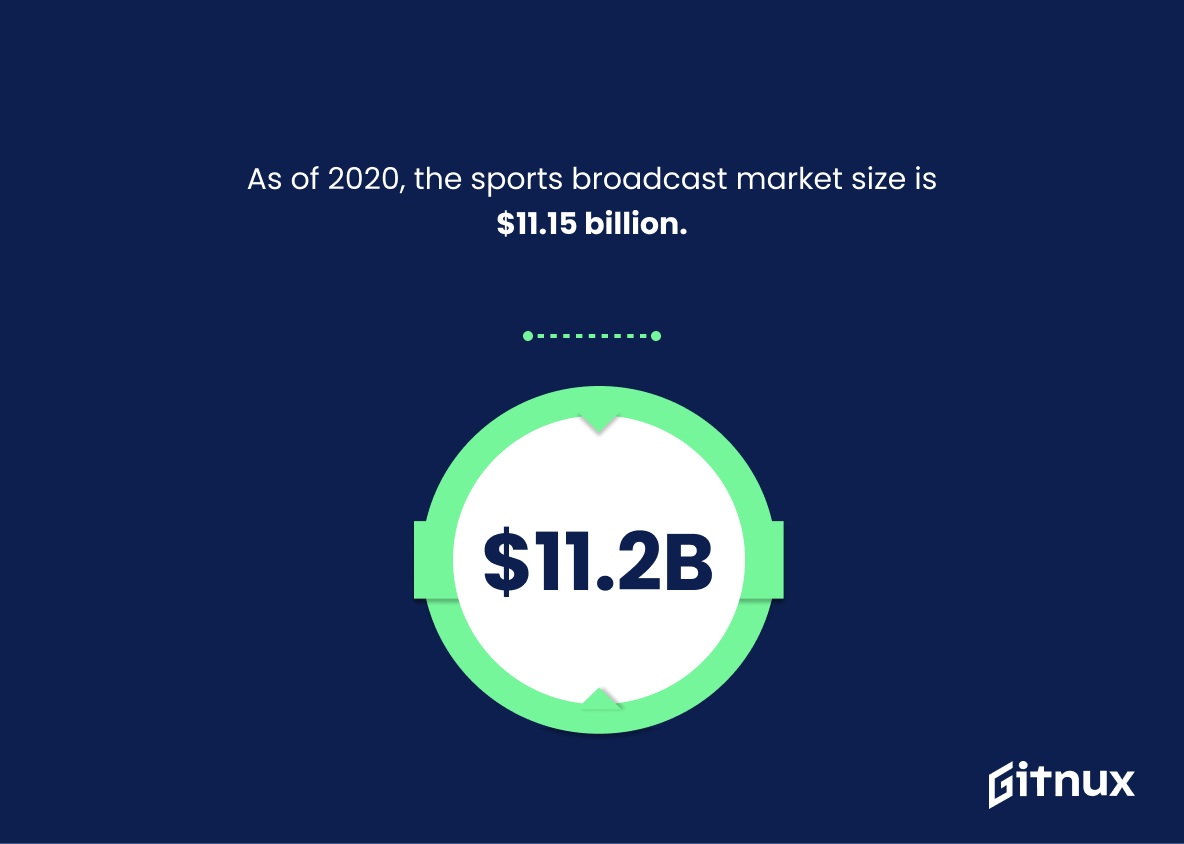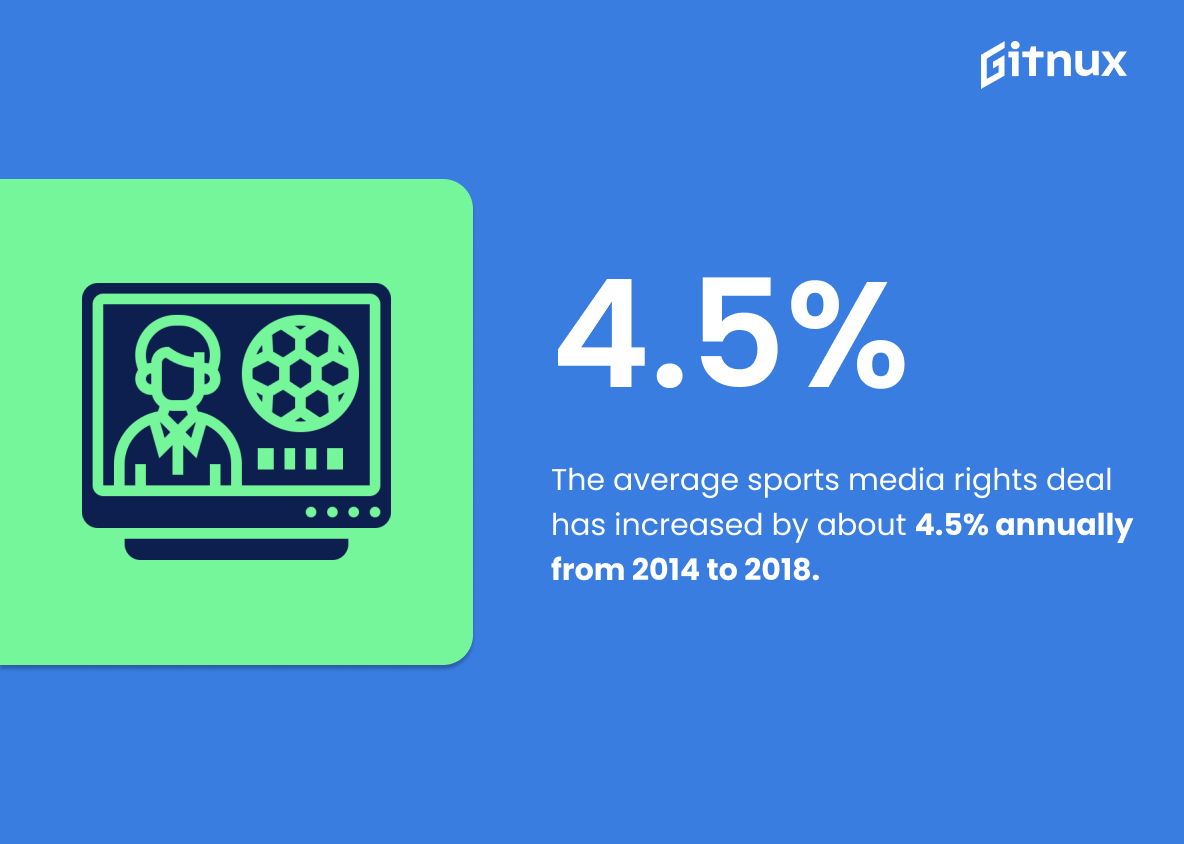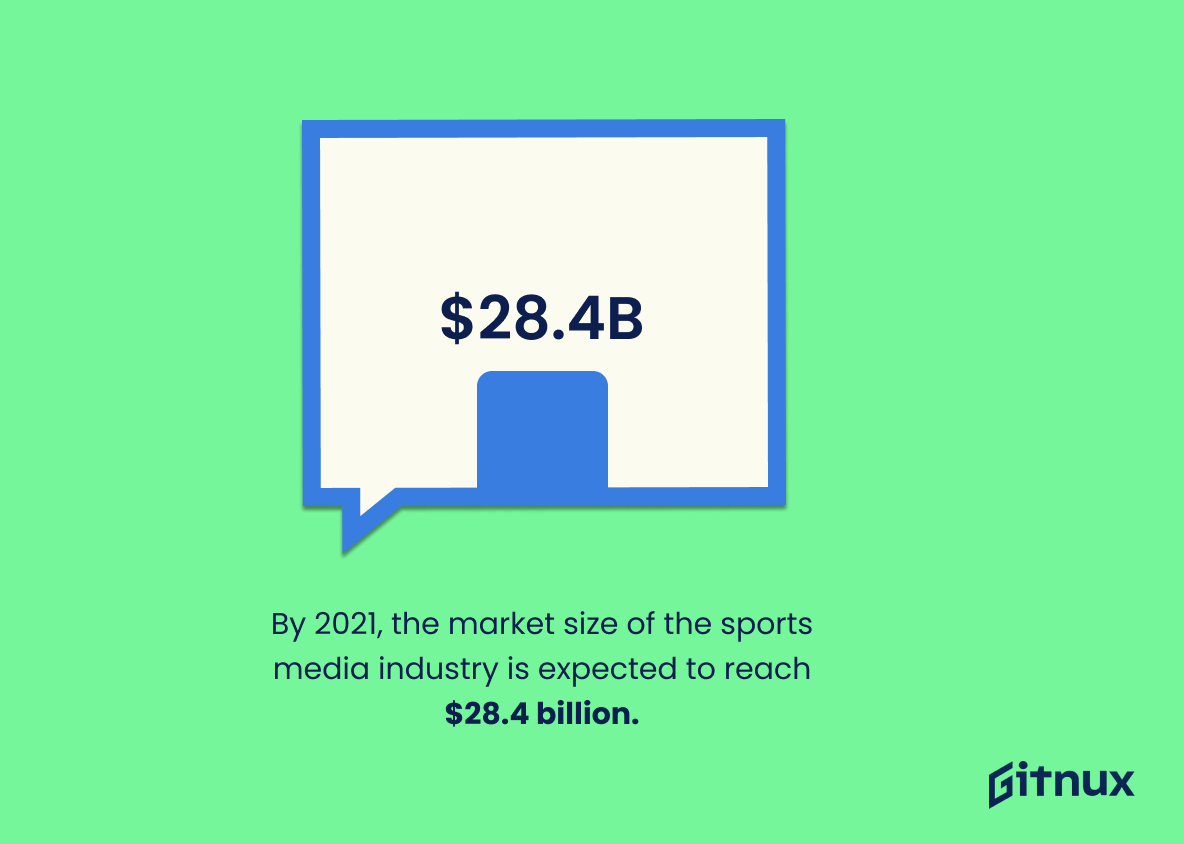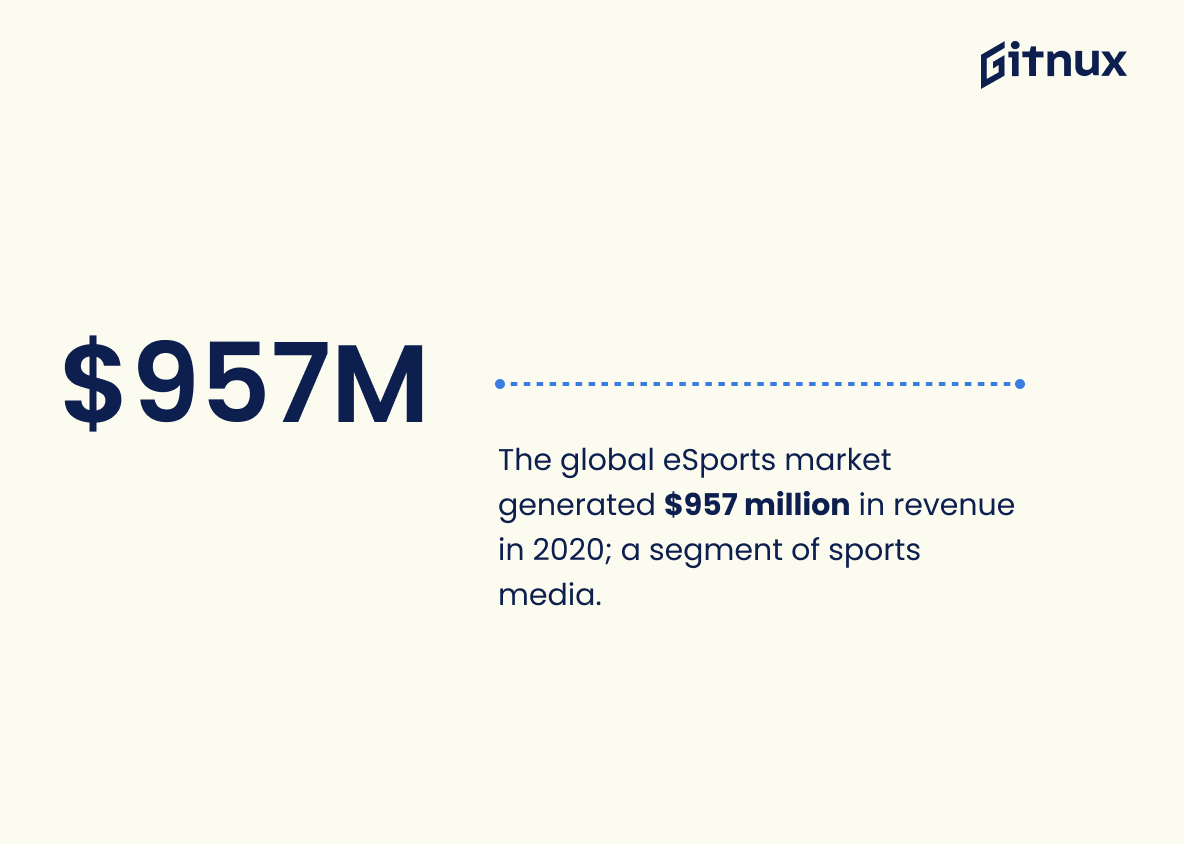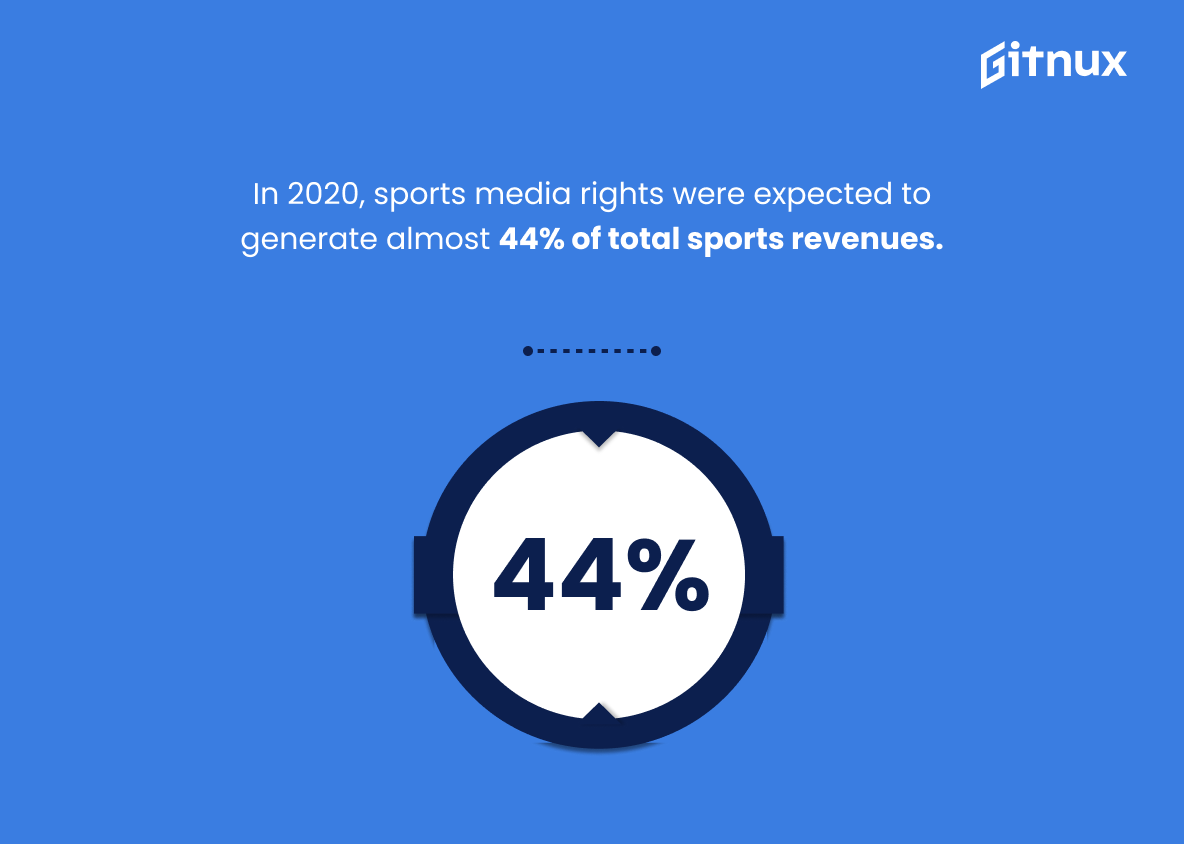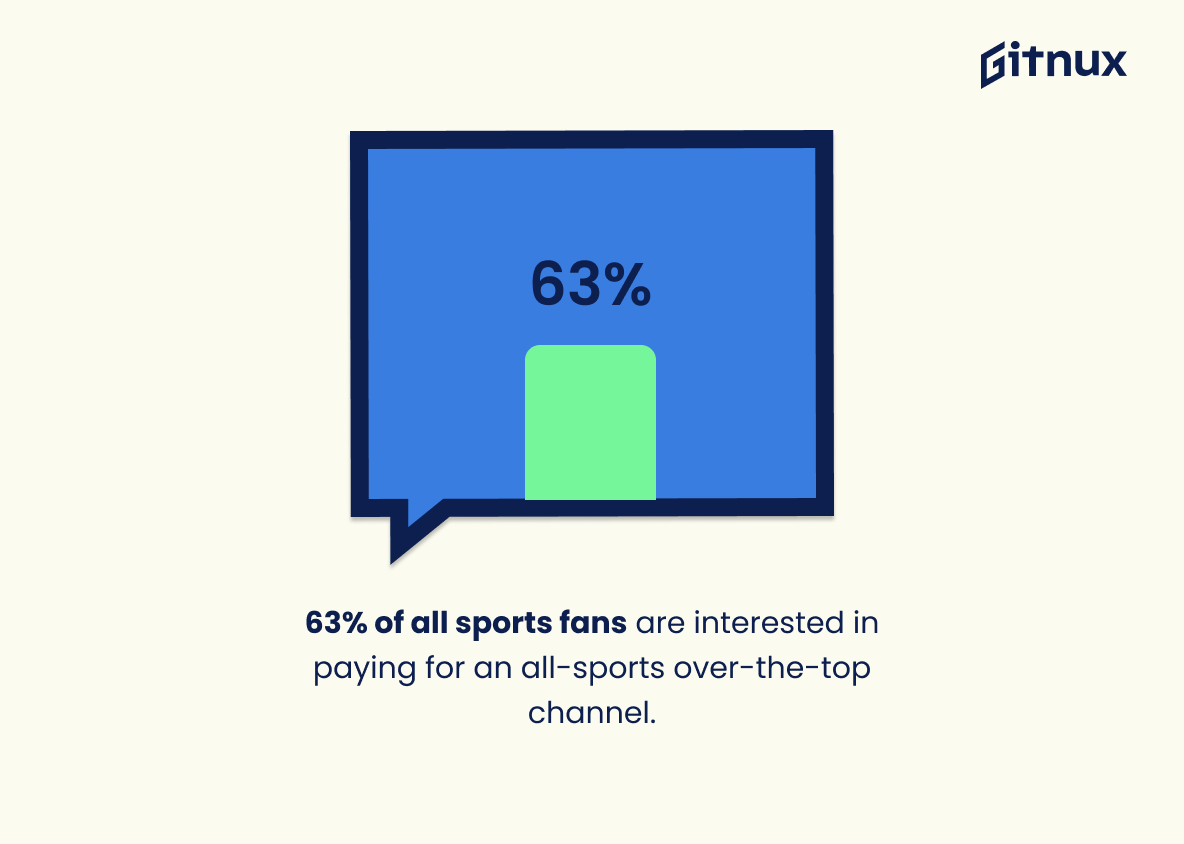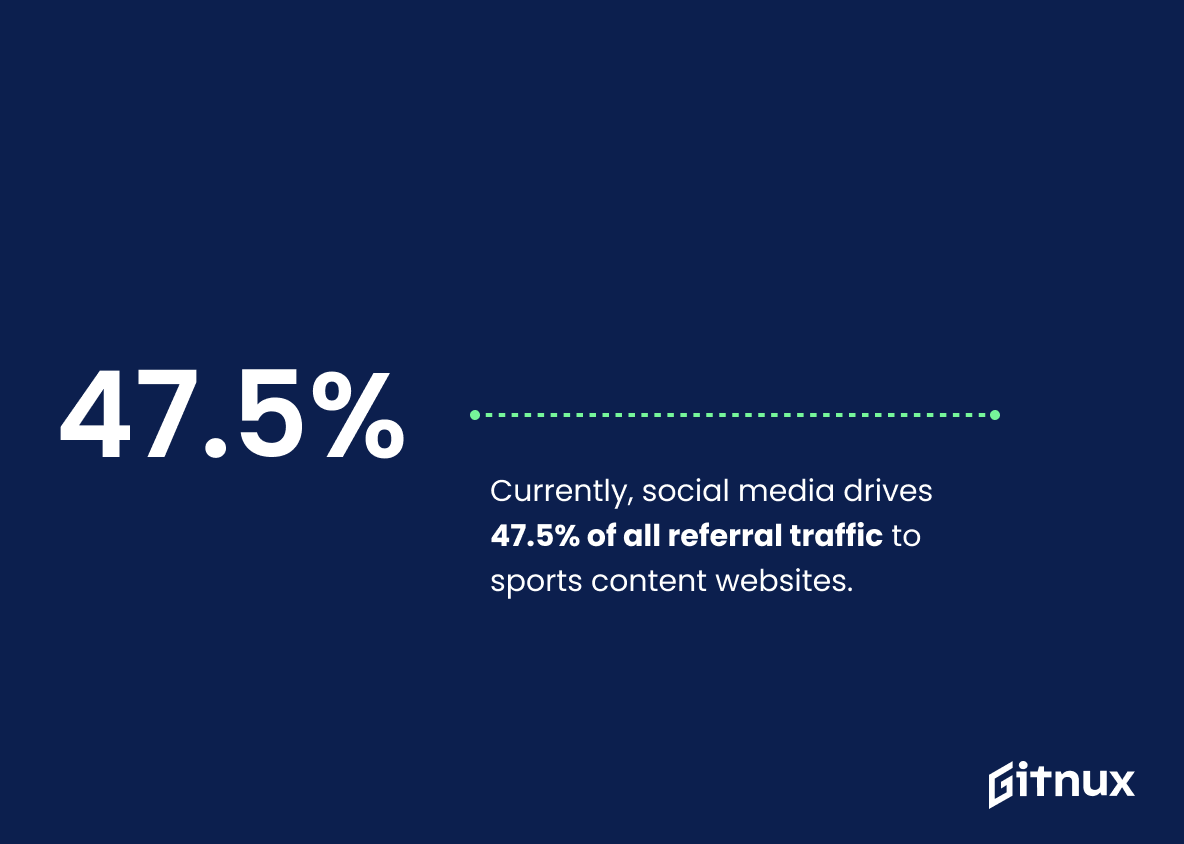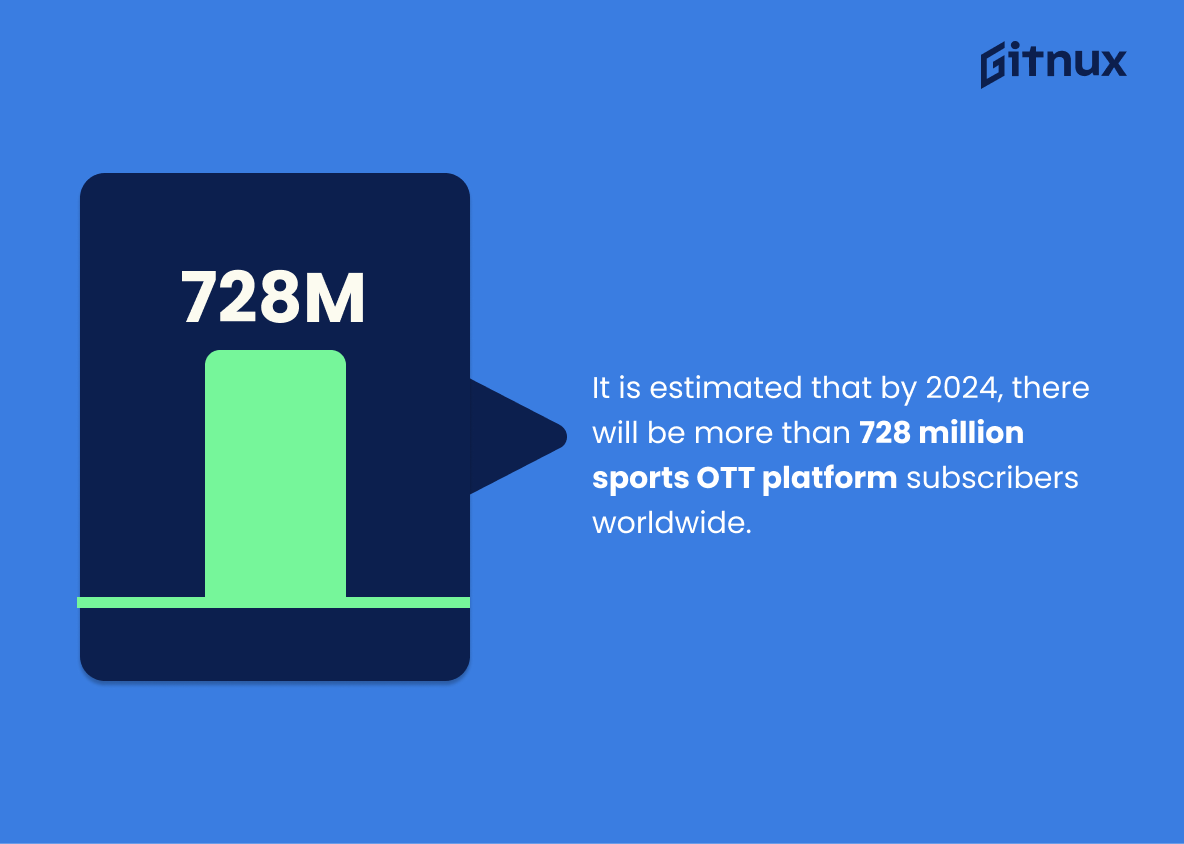In the dynamic, fast-paced world of sports, media platforms continuously seek advanced ways to engage fans and deliver heart-thumping action. The Sports Media Industry has become a thriving hub of technology, sponsorship, advertising, and meticulous statistics that fuel sports enthusiasts’ obsession globally. This blog post dives into the deep end of the pool, unpacking the latest trends, ground-breaking statistics, and indispensably crucial influences shaping the Sports Media Industry today. Whether you’re a sports marketer, an avid sports fan, or an industry professional seeking insights, understanding these comprehensive statistics will massively impact your perception of the continually evolving sports media landscape.
The Latest Sports Media Industry Statistics Unveiled
The global sports market is estimated to reach $614 billion by 2022.
Forecasting a rise to a whopping $614 billion for the global sports market by 2022 draws a visionary picture of a booming industry. For those deeply invested in the mirth and mechanics of the sports media industry, this could signal an avalanche of opportunities. It implies a significant expansion in fan base, heightened consumer engagement, and multiplying advertising spaces. It doesn’t just underscore the financial muscle of the sports world but attests to the growing power of sports media; transforming traditional pass times into lucrative consumer markets. As such, the growing size of the pie not only encourages bigger investments but also paves the way for innovations, elevating the sports media industry to new heights.
There is a projected 14% annual growth in global sports media rights from 2018 to 2023.
The vision of a 14% annual growth in global sports media rights from 2018 to 2023 serves as an intriguing highlight, adding an adrenaline rush of anticipation for the future growth of the sports media industry. Such an increase clearly underlines that the sports media arena is infused with stimulating opportunities, that it’s not just about broadcasting games but a mammoth that is continuously expanding and developing. It harbors implications of the rising monetary value of sports content, hinting at a bonanza of escalating investment opportunities in the sector. Moreover, this spike also hints at an increased demand for sports content globally, suggesting more eyes glued to screens, more hearts beating with the thrill of the game. It’s the pulse of an ever-evolving, dynamic industry holding much promise, in revenue and viewership.
The North American sports market alone is predicted to reach $83.1 billion by 2023.
Highlighting such an astounding figure propels us to the forefront of a thriving era for the Sports Media Industry. The very prediction of North America’s sports market skyrocketing to $83.1 billion by 2023 captures not just the financial capacity of the industry, but also the exponential growth it is poised to experience. It sets the stage for an invigorating discussion about the dynamic link between sports and media – a symbiotic relationship being fueled by technological advancements, evolving consumer preferences, and unbounded passion for the game. This statistic, in essence, reframes the narrative, celebrating sports media as a key player orchestrating this multibillion-dollar symphony.
The sports analytics market is estimated to reach $4.61 billion by 2024.
As the behemoth of the sports analytics market is on a path to smash through the $4.61 billion mark by 2024, it indicates a seismic shift in the way the Sports Media Industry operates. With such a pronounced growth rate, it insinuates the increasing reliance on data driven decision-making not only in the gameplay, but also in broadcasting, fan engagement, player recruitment and beyond. As such, any serious discourse on Sports Media Industry Statistics should unfailingly account for this impending wave of innovation, one that holds the potential to redefine the contours of the sports landscape.
As of 2020, the sports broadcast market size is $11.15 billion.
Offering a striking testament to the ginormous scale and economic heft of the sports media sector, the $11.15 billion market size of the sports broadcast market as of 2020 acts as a monetary echo, reverberating the influence of this industry. This significant number, in fact, not only signifies the economic muscle flexed by sports media, but also hints at the immense audience base tuning in, the advertising revenue pumped in, and the multiplying platforms of delivery. It is like a numerical narrator that talks about the industry’s growth, value, and dynamism – all key yardsticks for anyone researching or interested in the Sports Media Industry Statistics.
The average sports media rights deal has increased by about 4.5% annually from 2014 to 2018.
Painting a vivid picture of the burgeoning growth trajectory within the sports media industry, the statistic indicating a 4.5% annual increase in the average sports media rights deal from 2014 to 2018 crystallizes the inherent robustness of the sector. It brings to the forefront the fervor that stakeholders, ranging from broadcasters to digital platforms, display in seizing broadcasting rights, viewing them as a lucrative investment. This surge embodies a watermark of the industry’s evolving landscape, with viewership appetite fuelling escalating rights costs. As we dissect this statistic further, it emerges as a telling narrator of impactful trends including the growing premium on live sports content and the intensifying competition in the media market, making it a pivotal point of reference in any discourse on sports media industry statistics.
By 2021, the market size of the sports media industry is expected to reach $28.4 billion.
Highlighting a projection like ‘The market size of the sports media industry is anticipated to leap to $28.4 billion by 2021’ serves as a compelling indicator of the burgeoning economic power of the industry. This skyrocketing figure is set to command attention in a blog post about Sports Media Industry Statistics, acting as a magnet to attract prospective investors, startups and media professionals. It underscores the rapid growth and forward momentum of this sector, while postulating a vibrant, potent future. It ultimately encapsulates the increasing value being placed on sports media in our society, helping readers grasp the immense scale and impact of this industry.
The global eSports market generated $957 million in revenue in 2020; a segment of sports media.
This striking figure – $957 million in revenue generated by the global eSports market in 2020 – serves as a glittering benchmark for the rapid ascendance and burgeoning potential of eSports in the broader sports media landscape. Within the confines of the sports media industry statistics, this data point illuminates how eSports has not only shattered the traditional paradigms of sports consumption but also innovatively commercialized virtual competition. It underscores the seismic shift in consumer behavior, underscoring eSports appeal to a digitally-native audience and its vitality within the future blueprint of the sports media industry. Indeed, understanding this trend can equip stakeholders with insights to effectively navigate and exploit this digital revolution in sports media.
Approximately 70% of sports content is viewed via digital platforms globally.
With the global sports landscape witnessing a dynamic shift, this statistic serves as a shining beacon, illuminating the predominating trend in sports content consumption. The 70% metric of sports content being viewed via digital platforms globally is a testament to the evolving nature of media in the sports industry. This figure carries immense implications for sports media strategies, driving them towards digital integration. Whether it be live streaming matches, delivering game highlights, or engaging fans with interactive content, the digitalization wave is evidently engulfing the traditional forms of sports viewing.
Capturing the essence of this transformation, this statistic conveys a progressive story of adaptation – a shift from conventional broadcast to digital mediums. It underscores the potential avenues for monetization, branding, fan engagement, and even data-driven decision making within the sports media industry. In essence, it encapsulates the evolving digital consumption behaviors, dictating the urgent need for a robust digital strategy in the sports media universe.
In 2020, sports media rights were expected to generate almost 44% of total sports revenues.
Understanding that in 2020, sports media rights were projected to bring in almost 44% of total sports revenues, can greatly infuse a fresh perspective into our understanding of the sports media industry landscape. The statistic underscores the critical role that media rights play as a revenue stream, demonstrating its substantial weight in the overall financial health of the industry. Notably, this significant percentage points to the colossal marriage between sports and media platforms, showing how deeply interconnected they are. It also gives us pause to consider future trends, potential disruptions and the growing prominence of digital media within this realm. Ultimately, this figure forms an essential cornerstone in our exploration of sports media industry statistics, making it impossible to ignore or overlook. So, let’s dive in and wrap our minds around this mind-boggling revenue contribution.
Traditional TV audience for sports in the US declined by 12% in 2020.
In painting the contemporary landscape of the Sports Media Industry, a striking point of change is illustrated by the 12% plunge in traditional TV viewership for sports in the US during 2020. This figure is not merely a statistic, but an alarm bell ringing in the ears of industry leaders. It highlights a seismic shift in how audiences are consuming sports media, driven potentially by changing viewer preferences, technological advances, or varying access to sports content. Navigating this change is no longer optional for industry stakeholders; it is a matter of survival. Hence, this downturn in viewership raises pressing questions about the future of TV as a medium for sports, the industry’s capacity to adapt to change, and its agility in capturing shifting consumer preferences.
63% of all sports fans are interested in paying for an all-sports over-the-top channel.
Delving into the heart of the Sports Media Industry, this provocative figure of 63% – representing the sports fans inclined to shell out for an all-sports over-the-top channel – paints a dynamic business landscape. It highlights an exciting opportunity for potential investors, entrepreneurs and, of course, media companies, to nourish this palpable demand. Call it an index of consumer readiness or a reflection of the evolving ways fans consume sports media, this percentage can’t be ignored, as it rings an alarm for traditional broadcasters for a potential shift in paradigm. This statistic also provides a finger on the pulse of consumer preferences and technological advances, creating a bridge between the market’s expectations and the industry’s offerings.
Currently, social media drives 47.5% of all referral traffic to sports content websites.
Unveiling such a statistic in a blog post about Sports Media Industry Statistics can be a revealing game-changer. This nearly 50% referral rate from social media underscores the enormous power and influence of platforms like Facebook, Twitter, and Instagram in steering eager sports fans to their desired content. This is not merely a number, but rather a spotlight on the symbiosis between social media and sports content websites. It’s a testament to how modern media consumption habits are increasingly leaning toward social-driven discoveries.
In the landscape of the sports media industry, this is akin to knowing where the goalposts are. Armed with this knowledge, sports content creators, marketers, and industry strategists can tailor their efforts to align with consumer behavior, optimizing their resources and driving engagement within this sizable social-media savvy audience. Illustrating the pivot point for a new way to score in the game of sports media, this stat is the accelerated heartbeat of the industry’s future.
It is estimated that by 2024, there will be more than 728 million sports OTT platform subscribers worldwide.
Visualize standing in a stadium, the energy pulsating around you as you clap with the crowd, absorbed utterly in the thrill of the game. Now, imagine having the ability to participate in every play, without ever leaving your couch. Welcome to the future of sports media- the realm of Sports OTT platforms. As we turn the page towards 2024, the world is projected to be home to a monumental 728 million sports OTT subscribers. This crescendo of digital viewership paints a compelling narrative: The mantle of traditional broadcasting is slowly but surely, being passed to online streaming. This shift not only speaks volumes about today’s tech-savvy audience but also signifies expansive opportunities for sports media industry to innovate, engage and monetize. Prepare for more breakthroughs, increased personalization, and an immersive digital world of sports.all at the tap of a screen. So gear up, the sports media landscape is evolving, with more and more of us, worldwide, kicking back, tuning in, and streaming out.
Conclusion
The sports media industry, a mainstay in the world of entertainment, has been experiencing transformational changes in tandem with technological advancements. The statistics shared herein truly underscore this reality. They reveal an industry that’s experiencing growth on multiple fronts, including volume of content, revenue, user engagement, and much more. The future of the sports media industry appears extremely promising, buoyed by an increasingly digitized landscape ripe for further evolution and expansion. In conclusion, these statistics offer indispensable insights for sports media enthusiasts, professionals, and investors alike, setting the stage for strategic decision-making and catalyzing fresh, innovative strides in this exciting industry.
References
0. – https://www.www.pwc.com
1. – https://www.www.grandviewresearch.com
2. – https://www.www.futuresport.co
3. – https://www.www.globenewswire.com
4. – https://www.www.sportspromedia.com
5. – https://www.www.statista.com
6. – https://www.www.reportlinker.com
7. – https://www.www.sportbusiness.com
8. – https://www.www.deloitte.com
